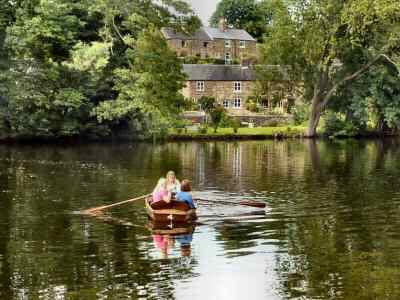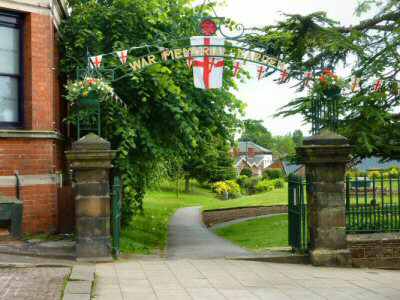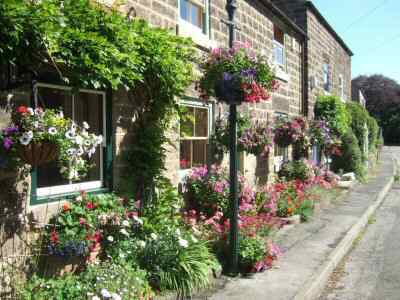BELPER
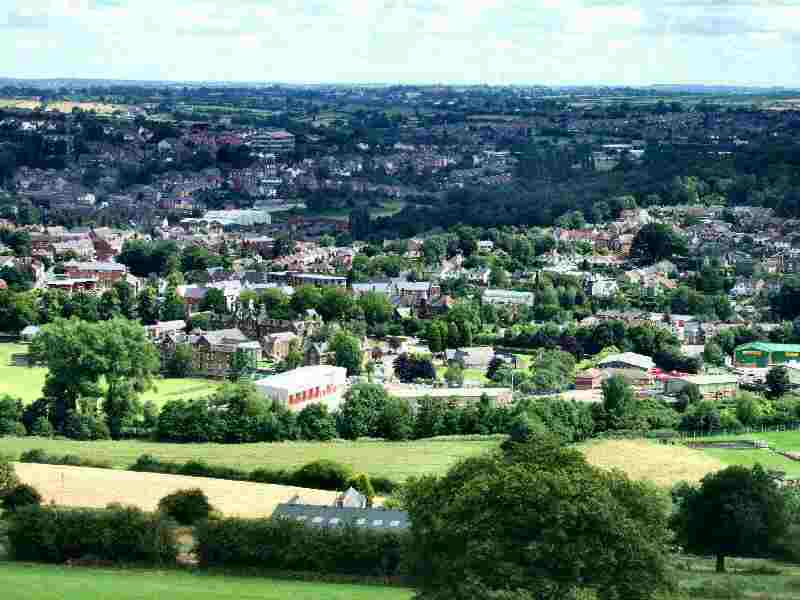
PLAN YOUR DAY OUT
Location: Belper is on the A6 between Derby and Matlock (SK345485). The railway station is at the rear of King Street, the town’s main shopping street.
Visit: Explore the beautiful River Gardens, with its pools, shrubbery and colourful flower beds. There is a central bandstand and café. Rowing boats may be hired in the summer. – Tour the ancient town, and you will be well rewarded. – Relax in the War Memorial Park.
Refreshments: The town has many cafés, pubs, and restaurants to suit all tastes.
Walk: Enjoy the Strutt Heritage Walk from Belper to Milford, returning on the other side of the valley.
Special Places of Interest in the Locality: Heage Windmill is on the brow of a hill between the villages of Heage and Nether Heage in the district of Amber Valley. The Windmill is open to the public on a seasonal basis. – Ecclesbourne Valley Railway runs from Wirksworth to Duffield, which has a short extension to Ravenstor. It is Derbyshire’s longest heritage railway line. – Arkwright’s Mill at Cromford Visitor Centre at Building 17 of the 15-mile-long Derwent Valley Mills World Heritage Site. It allows you to explore all the key heritage and wildlife sites using interactive touch screens. The exhibition continues with the story of the Derwent Valley’s global impact on the cotton industry, where the mill comes to life as part of the Arkwright Experience
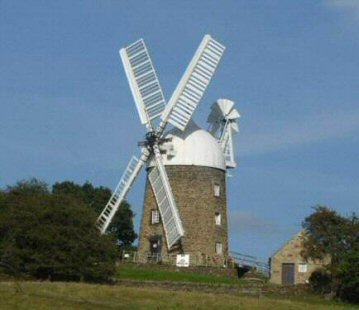
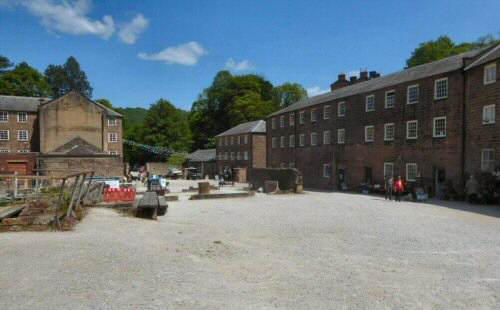
INTRODUCTION
The story of Belper begins as a small settlement in the Royal hunting forest of Duffield Frith. It was given the name ‘Beaurepaire’, which means ‘beautiful place’. All this must seem rather strange reading to the motorist who has driven through the town on the narrow, overcrowded A6, the only desire being to reach the other side as quickly as possible.
A completely different picture emerges for those who have taken the time to explore. Of a small town so rich in industrial heritage that it is not only of national importance but occupies a pre-eminent position on the world stage. Belper is an integral part of the Derwent Valley, which is universally recognised as the Cradle of the Industrial Revolution and now holds World Heritage Status.
ST. JOHN’S CHURCH
In the mid-1200s, William de Ferrers, lord of the manor at Belper and several other manors, built a small stone church in a clearing. So that the foresters and their families would have somewhere to worship close to home, it was first dedicated to Thomas Becket but was re-dedicated to St John during the Reformation. Today, it has changed very little in appearance but is now used for the joint purpose of the Town Council Chambers and Heritage Centre.
THE BUTTS
Near the chapel is an area known as The Butts, where archery practice once took place, and where horse fairs were held twice a year. The marketplace was once an area of wasteland, where in 1762, John Wesley preached a sermon. It leads down to King Street, the main shopping area.
NAIL MAKING
Belper’s first main industry was the making of nails. Hunting was a regular pastime in the area, and huntsmen brought their horses to Belper to be shod. Horsenails made in Belper were considered the best in the country and attracted hunting men from miles around.
Belper’s earliest written record of nail making dates back to 1260, but nails were likely made shortly after the Norman Conquest. Initially, the nailer worked for himself with the help of his family. The children would carry the coal, his wife worked the bellows, and he would fashion the nails. It was a hard life, and the work was hot and exhausting.
Nailers had a reputation as hard drinkers, often got into fights, and many were imprisoned for drunkenness and disorderly behaviour. They did not work on Mondays, which they kept as a day for celebrations or recovery! In the 1800s, the trend changed, and larger businesses were set up, but wages were poor, and strikes were not uncommon. Gradually, competition from machinery sent the industry into decline. From a high of 1,400 men and women, the number of workers dropped to 38 in 1901. Today, nail making is no longer in Belper, but it is recalled by the local football team, whose nickname is ‘The Nailers.’
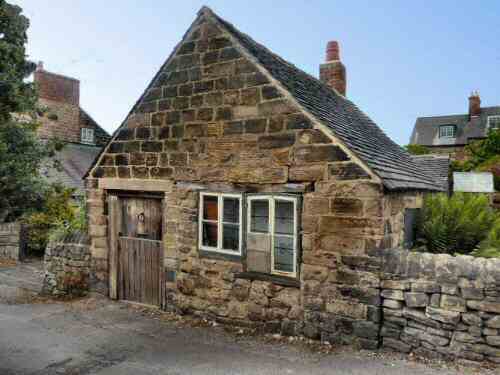
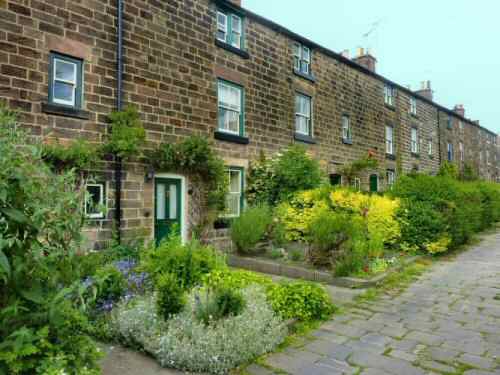
JEDEDIAH STRUTT
Up until 1770, Belper was a small village surrounded by fields with a population of just over 500 people. But in 1771, Sir Richard Arkwright partnered with Samuel Need of Nottingham and Jedediah Strutt to develop water-powered mills along the Derwent. This transformed Belper over the next few years, with mills springing up along the riverbank and houses and other service requirements being built to meet the demands of the rapidly increasing population.
Rarely can one man and his family have created such a lasting impact on the economy of a small town as the Strutts did on Belper. Using the power of the River Derwent to drive the machinery, Jedediah built his first cotton mill, the South Mill, at Belper in 1776. This was followed about ten years later by the first North Mill, destroyed by fire in 1803.
William, his eldest son, was a pioneer in making buildings fireproof. He rebuilt the North Mill in 1803, which was considered a masterpiece of engineering technology at the time. The brick arch floors were supported on an iron frame, contributing to making the mill fireproof; it had its own ingenious warm air heating system and a hoist between floors.
Small gun embrasures are on the gangway connecting the mills over the Ashbourne road. They were put there to ward off Luddites intent on causing severe damage to the business, but fortunately, they were never needed. North Mill is the second oldest of its type remaining in the world.
INDUSTRIAL HOUSING
The first industrial housing in Belper was built in Short Row, and the next in Long Row. Look for the gaps in Long Row, where the houses have been demolished to make way for George Stephenson’s railway, which runs through the middle of the town under no less than ten bridges. Larger homes were provided in blocks of four for mill overseers in the Clusters, and just around the corner in Joseph Street is an old nailer’s workshop. St. Peter’s Church, off Church Lane, was built to meet the spiritual needs of a growing population when St John’s Chapel became too small to satisfy the increasing demand.
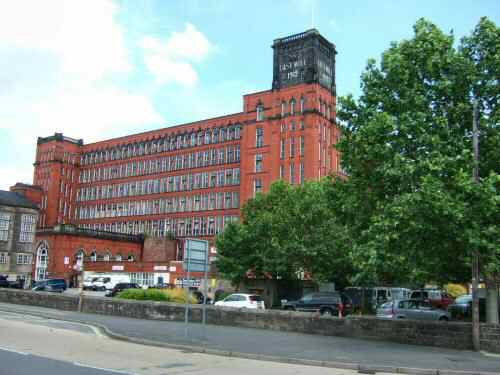
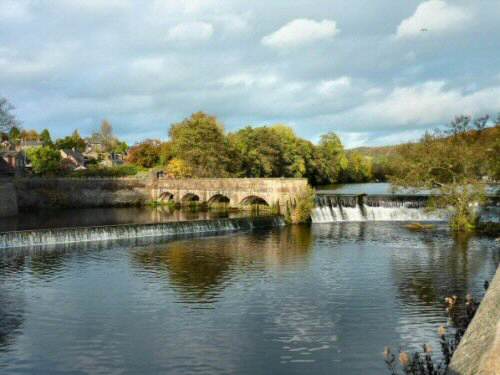
TEN FASCINATING FACTS ABOUT BELPER
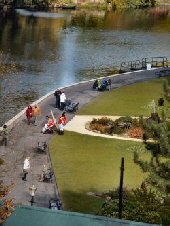
1. Belper won the Champion High Street Award 2019 for the best High Street in England. In addition, Belper’s Laura Armstrong also won the High Street Hero award for her achievements in promoting initiatives and projects to improve the high street experience for all.
2. A compassionate man, Strutt had strong religious beliefs and showed great concern for the welfare of all his employees. He provided them with houses, education and spiritual training.
3. Row upon row of good-quality houses was built with three of the streets named after Jedediah’s sons, William, George and Joseph.
4. Model farms were established at Belper and Milford, where food was produced so employees could be supplied at a reasonable cost, with credit facilities available.
5. Jedediah ended his days at Exeter House in Derby in 1797 and was buried at the Unitarian Chapel in Belper that he had built. He left three very able sons under whose control the cotton mills at Belper grew to become the largest in the country.
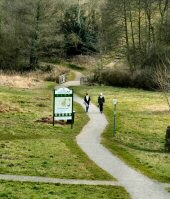
6. Belper Parks Local Nature Reserve, an award-winning park in the heart of Belper. It covers 50 acres of parkland and open space in the former Deer Park and includes a wildflower meadow, grassland, and Coppice Brook.
7. Opposite the entrance to the River Gardens is ‘The Old Nick’, Belper’s former police station, built in 1847. When the Derbyshire Constabulary was first formed in 1857, it was the headquarters for two years.
8. The De Bradelei Mill was once the headquarters of George Brettle and Co. Stockings were produced for George III and his granddaughter, Queen Victoria, and Admiral Horatio Nelson wore a cotton vest at the Battle of Trafalgar in 1805.
9. George Strutt founded the Memorial Gardens in the centre of Belper in 1922, and they are a great place to relax.
10. The beautifully restored Ritz Cinema, an independent luxury cinema in its Art Deco former glory, is open all year.
Belper Strutt Heritage Walk
